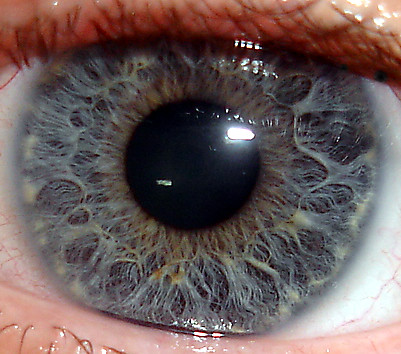
I have asked Dr. Neil Friedman to help update us in the newest developments in the field of ophthalmology. Here's his summary from a recent meeting of the American Academy of Ophthalmology.
Refractive surgery: Wavefront or "custom" laser vision correction procedures have demonstrated improved results in acuity and quality of vision. New keratomes have increased the safety in creating LASIK flaps, alternatively, there has been a resurgence in surface ablation techniques which avoid making a flap all together. For patients with too high a prescription for laser correction, two types of implantable lenses are now available.
Cataract surgery: Several multifocal intraocular lenses are available for implantation at the time of the cataract surgery. Patient selection is critical in choosing appropriate candidates for the lens. Although up to 80% of patients may not require glasses for various activities, 5% are bothered by glare and halos. In Dr. Friedman's opinion this complications rate is too high and he is cautious in recommending this technology currently. Better lens options may be available in the future.
Corneal transplantation: Advances in transplant techniques allow ophthalmologists to replace just the inner layer of endothelial cells rather than the full-thickness cornea. This new surgery is less invasive, safer, and offers faster visual recovery.
Dry eye: Restasis (topical cyclosporine) remains one of the most effective treatments for dry eyes. Another agent, Diquafosol, is in FDA trials.
Surface infections: The emergence of resistant organisms has changed the treatment of conjunctivitis and corneal ulcers. Dr. Friedman recommends the newer generation topical fluoroquinolones (Vigamox, Zymar, and Quixin) instead of the older ones (Ciloxan and Ocuflox).
Glaucoma: New combination medicines are expected soon that will reduce the number of drops patients take daily, thereby improving compliance with this chronic disease.
Retinal disease: New anti-angiogenic agents have revolutionized the treatment of the wet form of macular degeneration, by not only stabilizing, but also improving patients' vision. Intravitreal steroids have demonstrated excellent efficacy in treating patients with diabetic macular edema.
Many thanks to Dr. Friedman for this very informative update.
Photo: courtesy of flickr.
8 comments:
Hi
How about dark dots that sometimes move about in the eye. Have there been any improvements in their treatment.
TIA
Max
I was on a course of Lamasil tablets and I suffered from dry eyes and I couldn't see very well. My optician couldn't find anything wrong with the eyes. I stopped taking Lamasil and feel much better.
I am assuming that by the moving dark dots you are referring to "floaters" in which case no, there is nothing new in their treatment.
Eye like this page.
GET IT>?!?!?!?!
I have tiny floaters, hardly notice them most times. Interesting to think they have been there all my life.
I have had floaters for my life. Doesnt really impact at all :) Havnt been on Lamasil tablets?
Might ask about them.
Peter
Hi
For patient with high myopia with 10, 12 D , Is there any risk for blindness?
P.s: no other problem except himyopia and thiness of retina
Thanks
Thanks Best Regards
mirc
mirç
mırc
mırç
mircturk
turkmirc
mirc indir
mirc yukle
mirch
mırch
mirc turk
turk mirc
mırcturk
turkmırc
mırc turk
turk mırc
turkiyemirc
türkiyemirc
turkiye mirc
türkiye mirc
mircturkiye
mirctürkiye
mirc turkiye
mircturk
turkmırc
muhabbet
forum
forum
turkforum
turkiyeforum
mirc
turkmirc
toplist
site ekle
pagerank
turkmirc
turkforum
sohbet
chat
sohbet odaları
bedava sohbet
bedava chat
türk
karar
I am also suffer from lasik problem.I have got two times treatment.but not yet good reflection......
Post a Comment